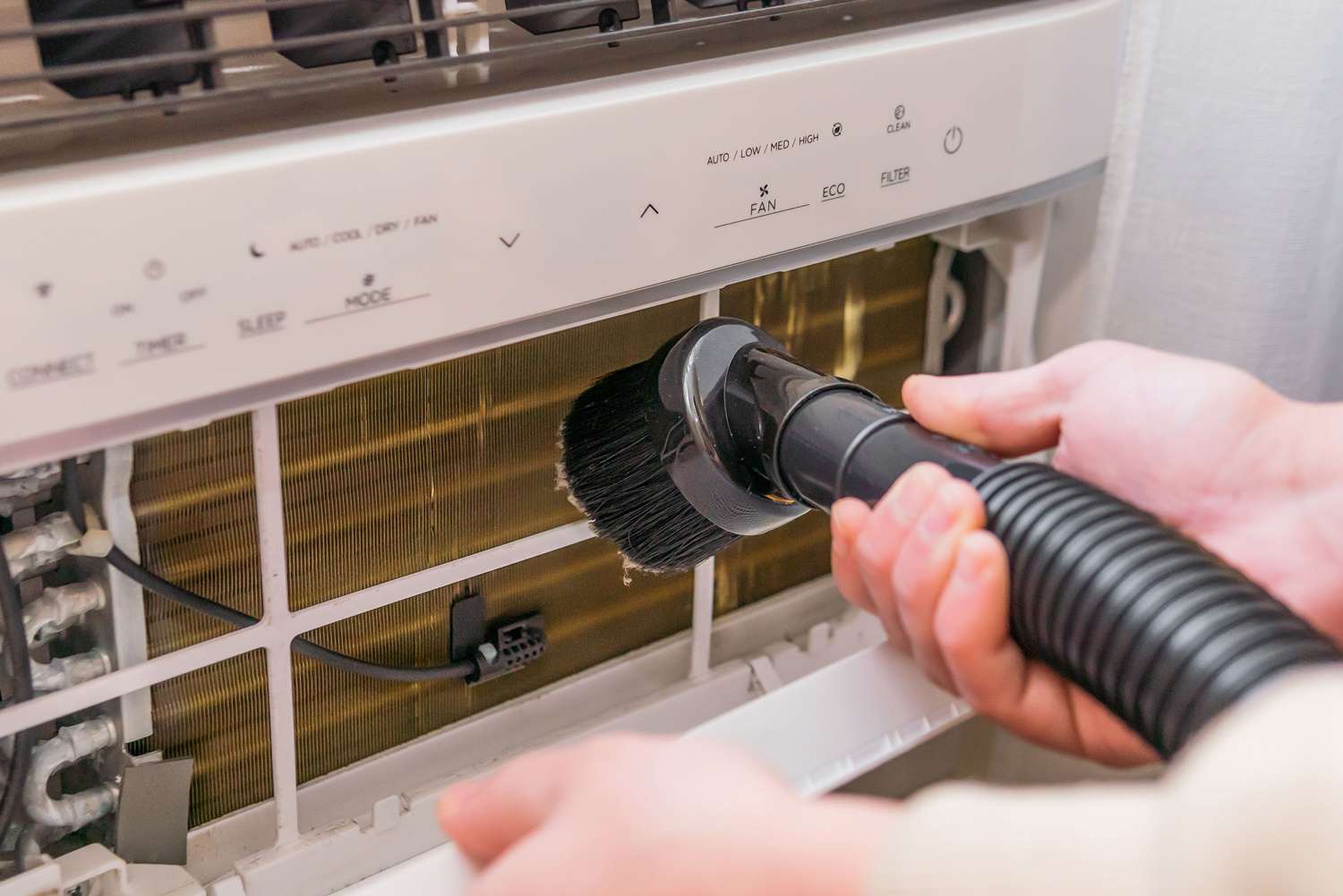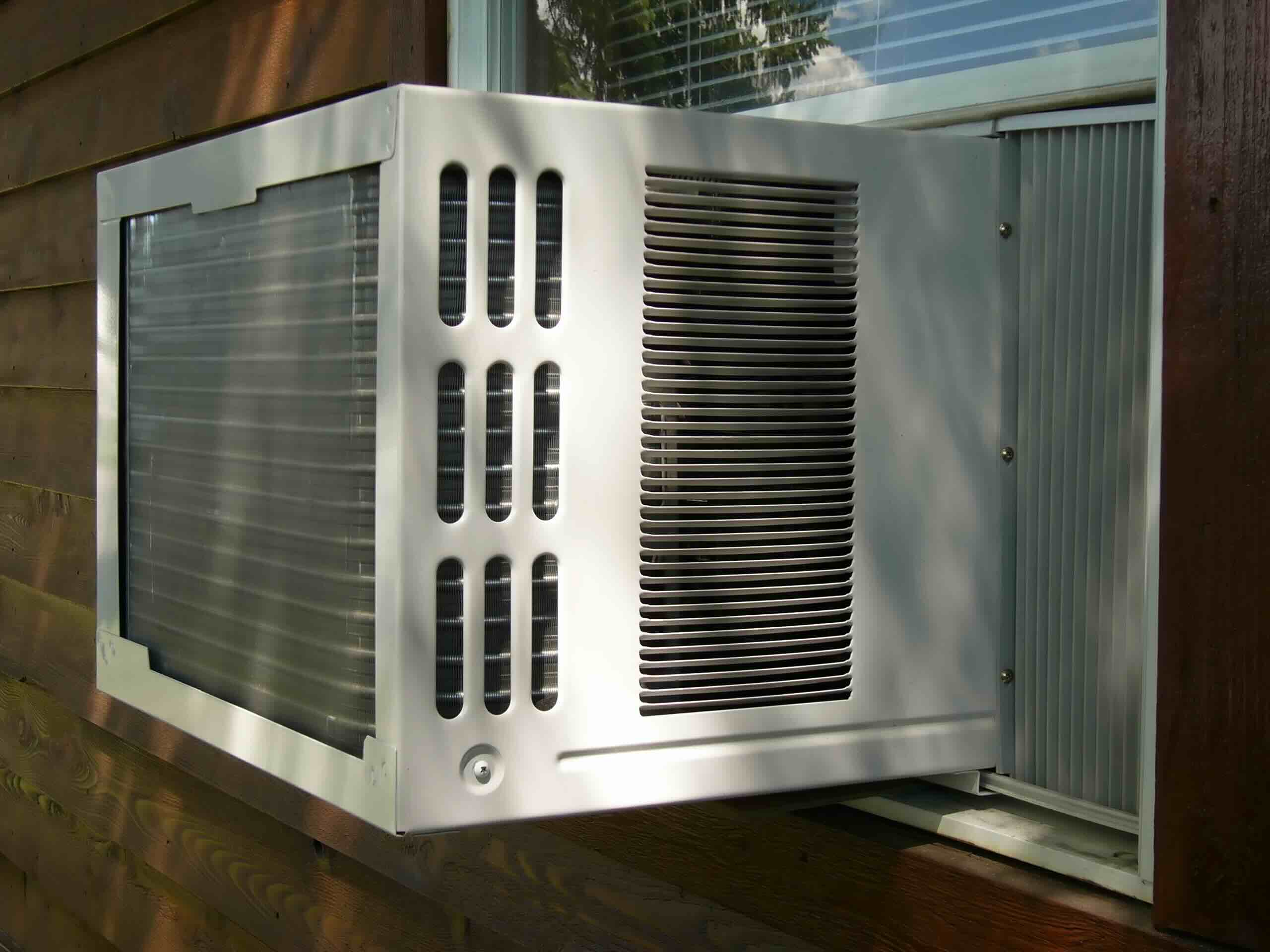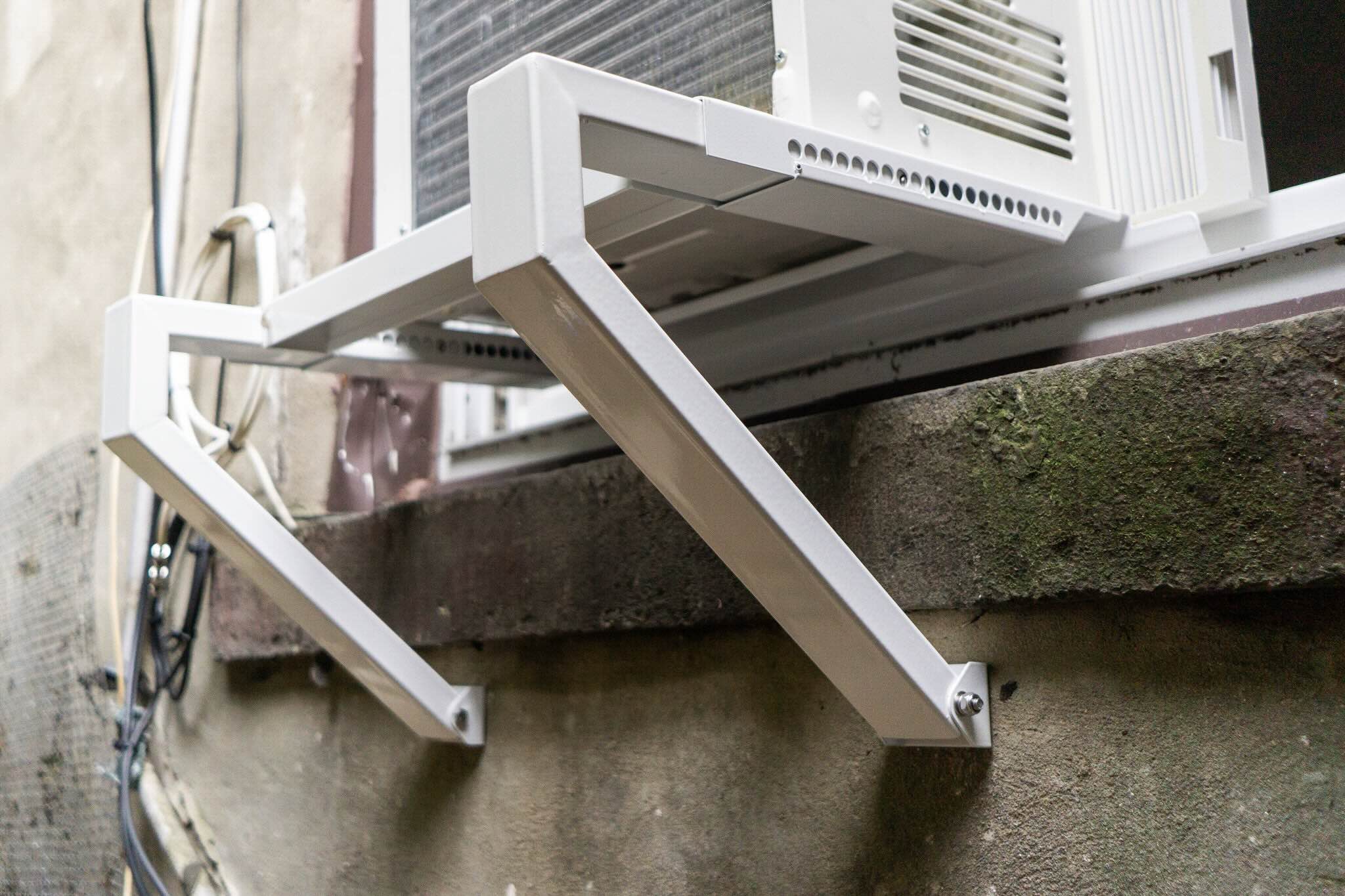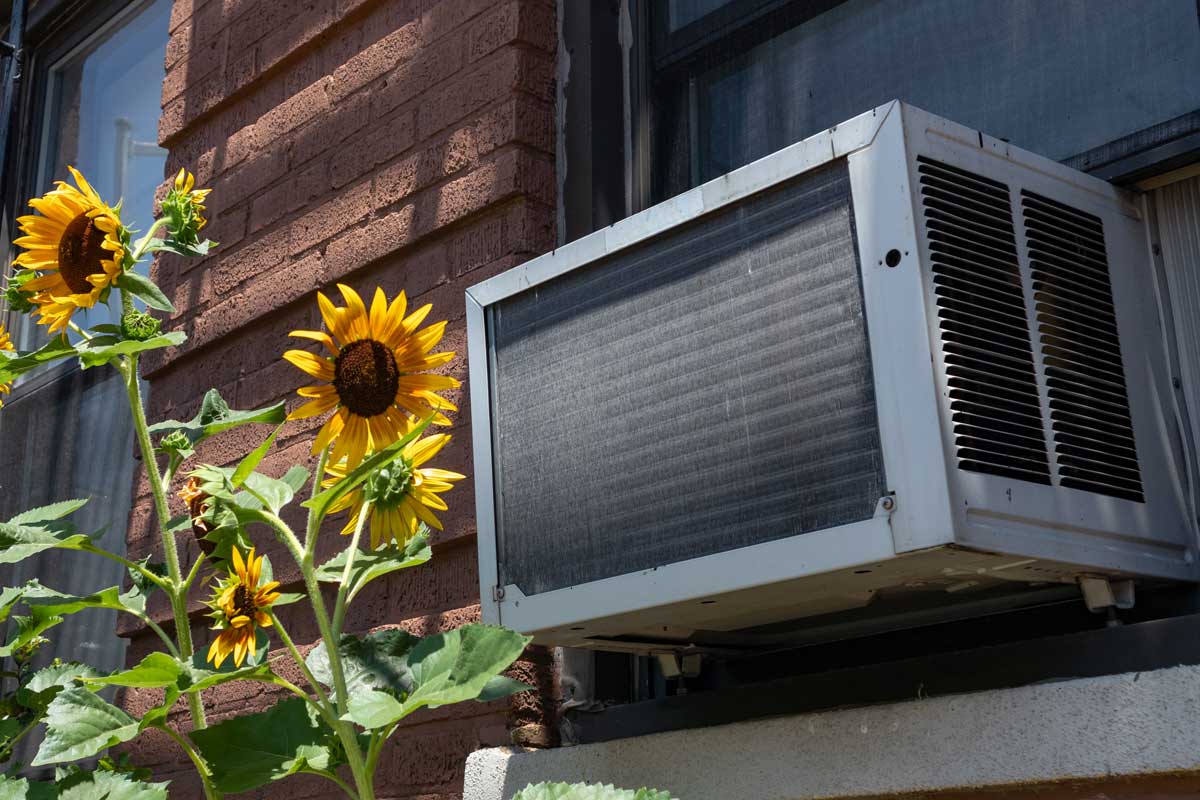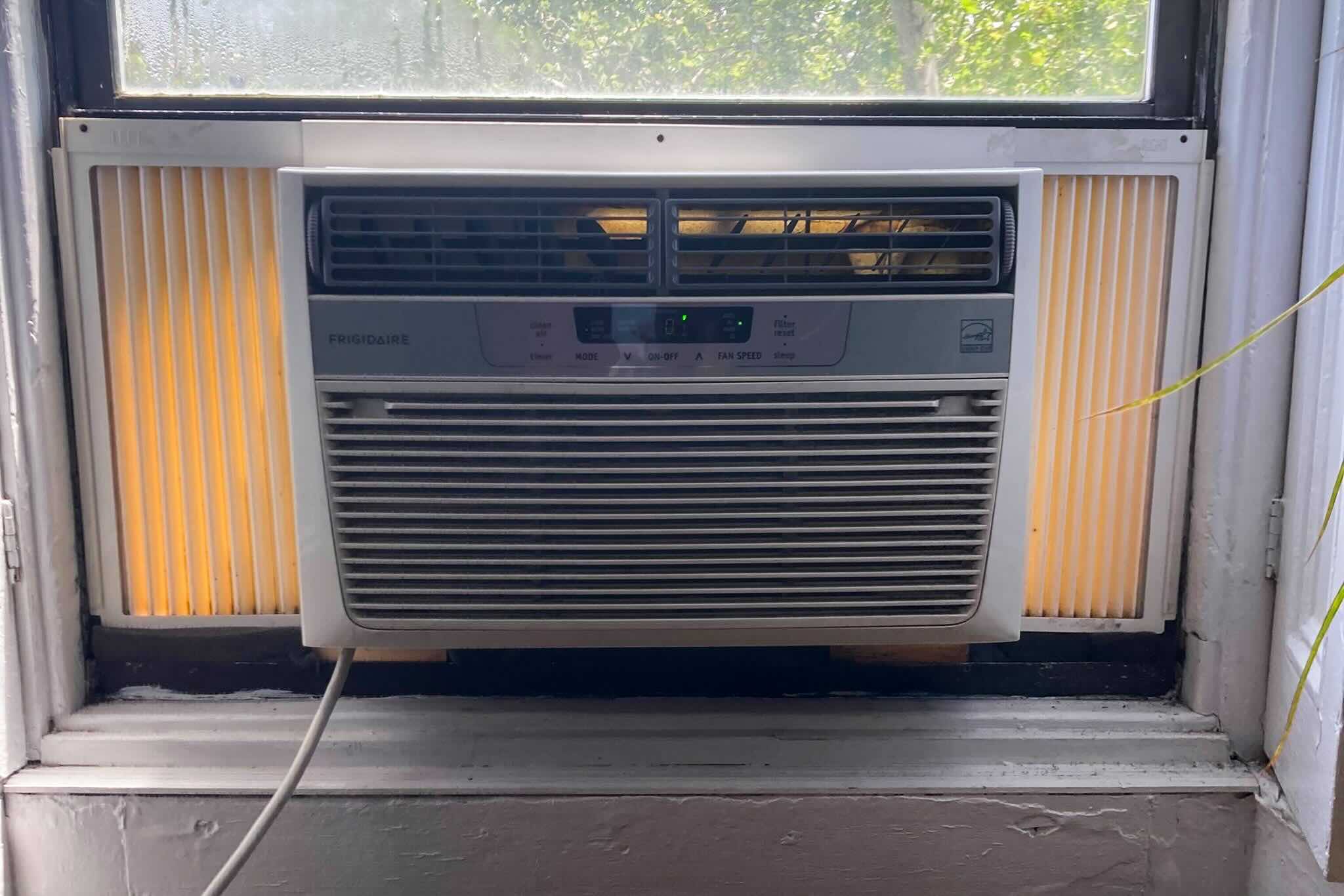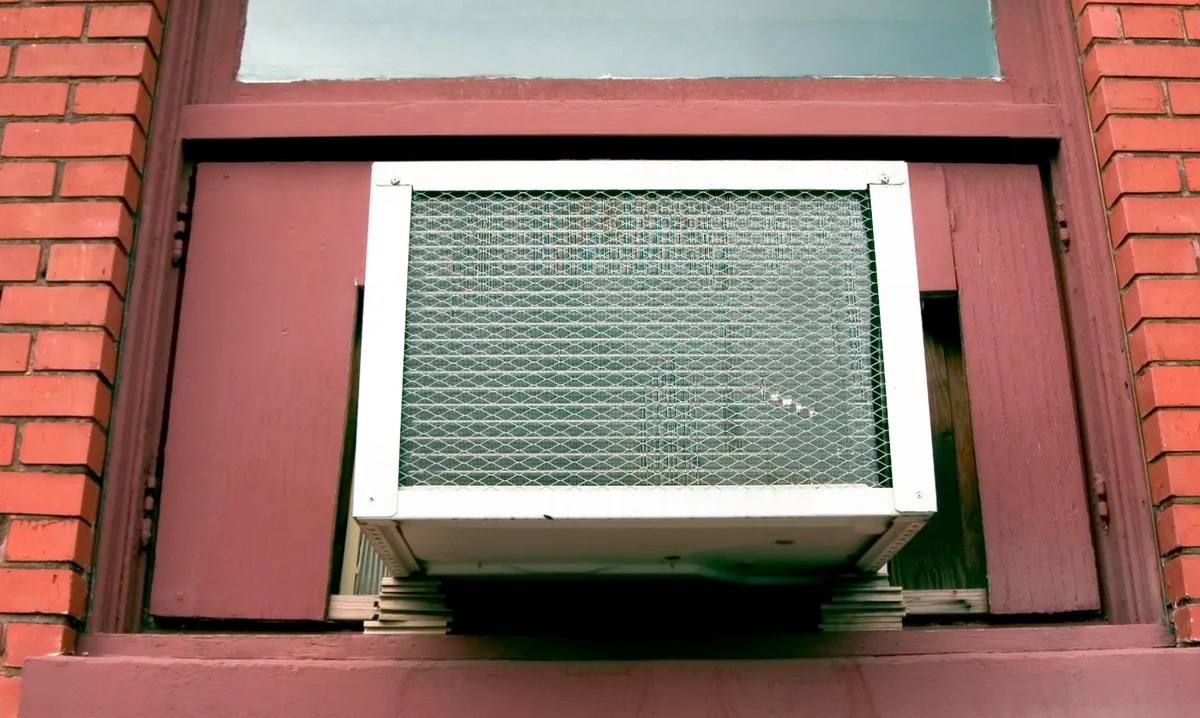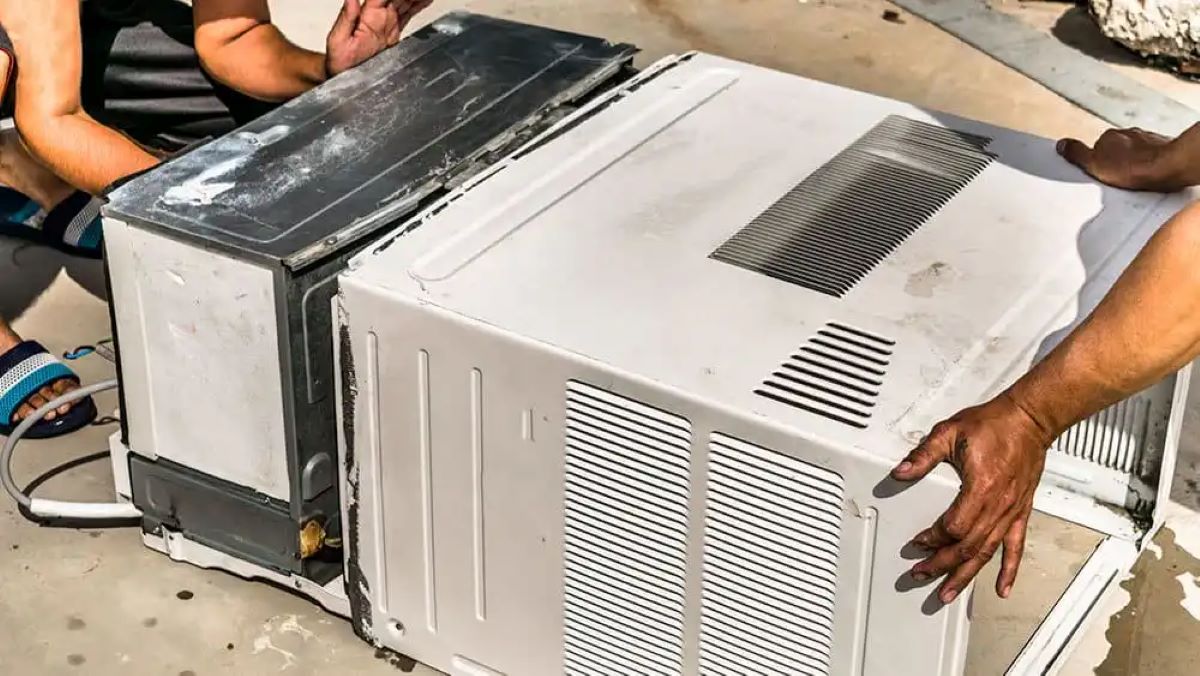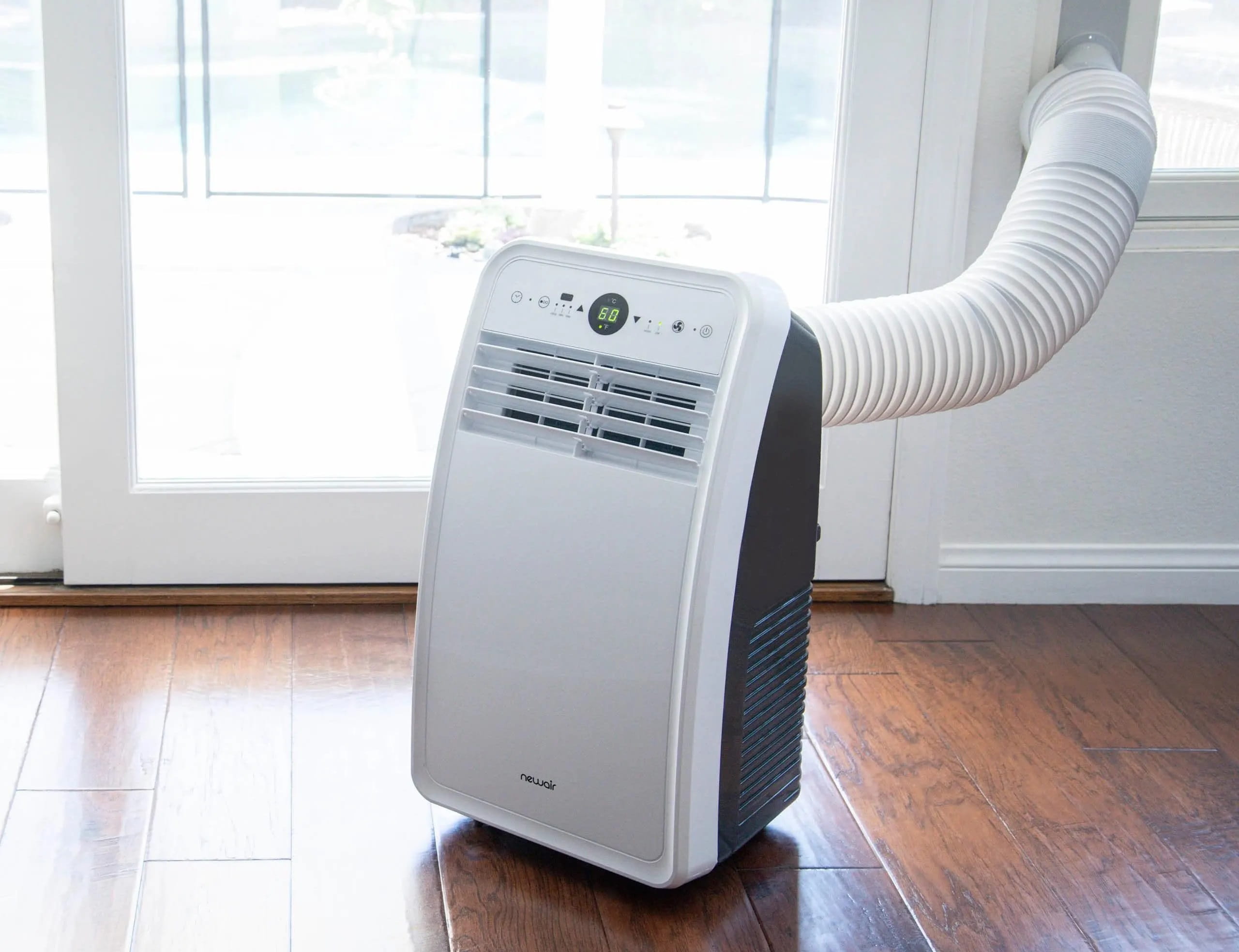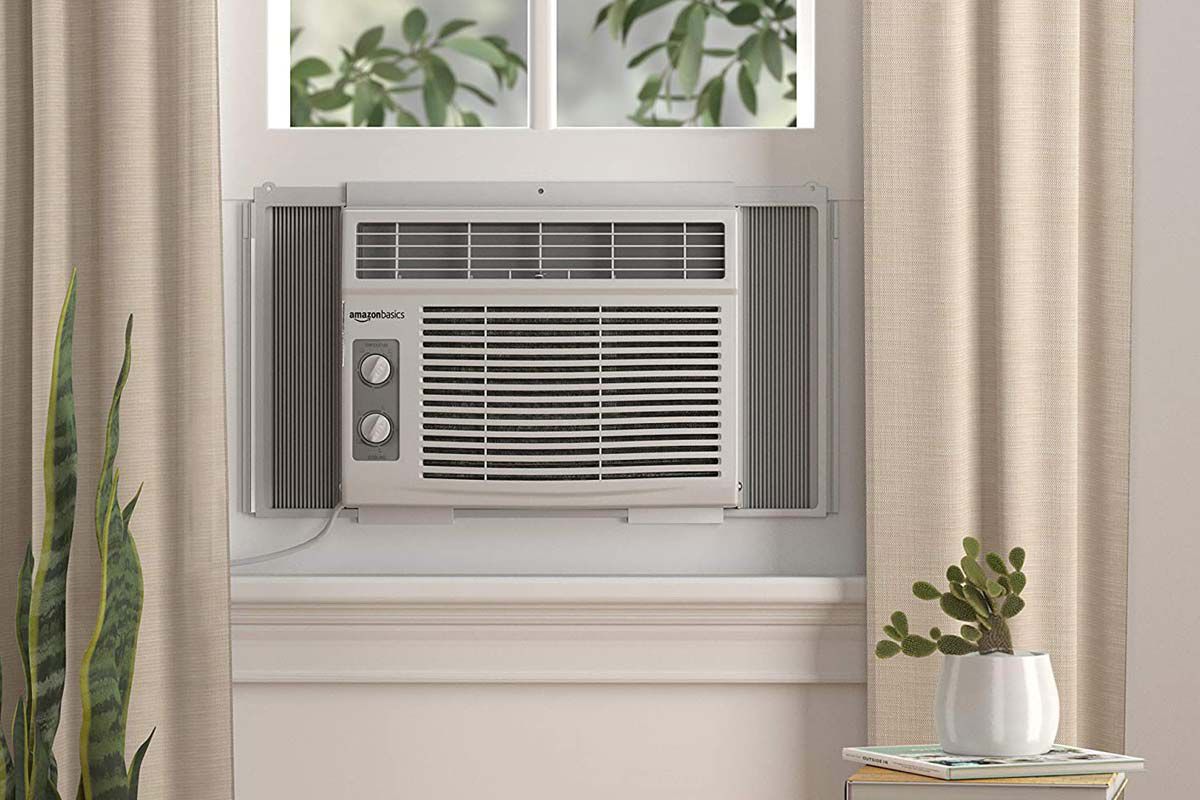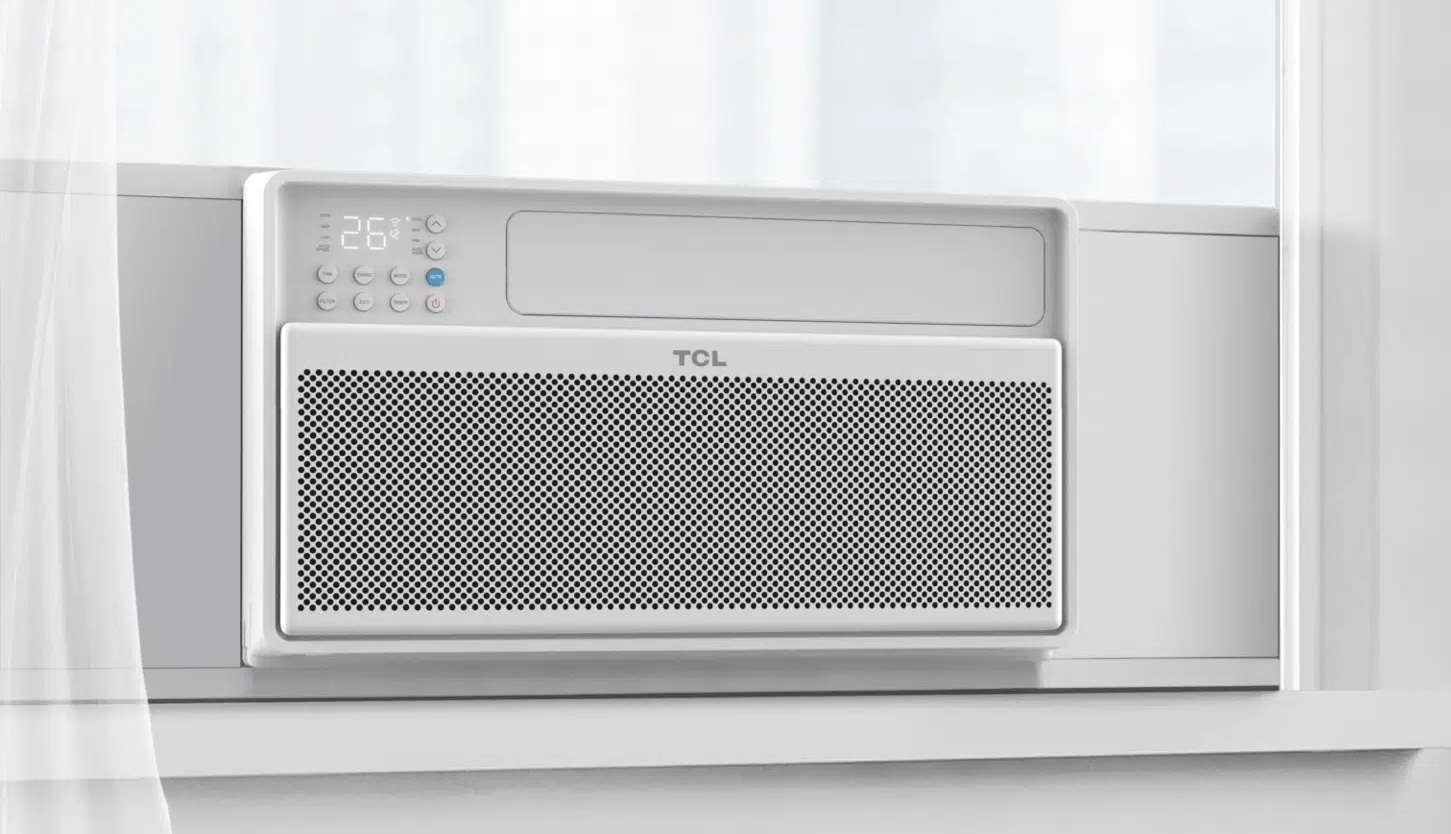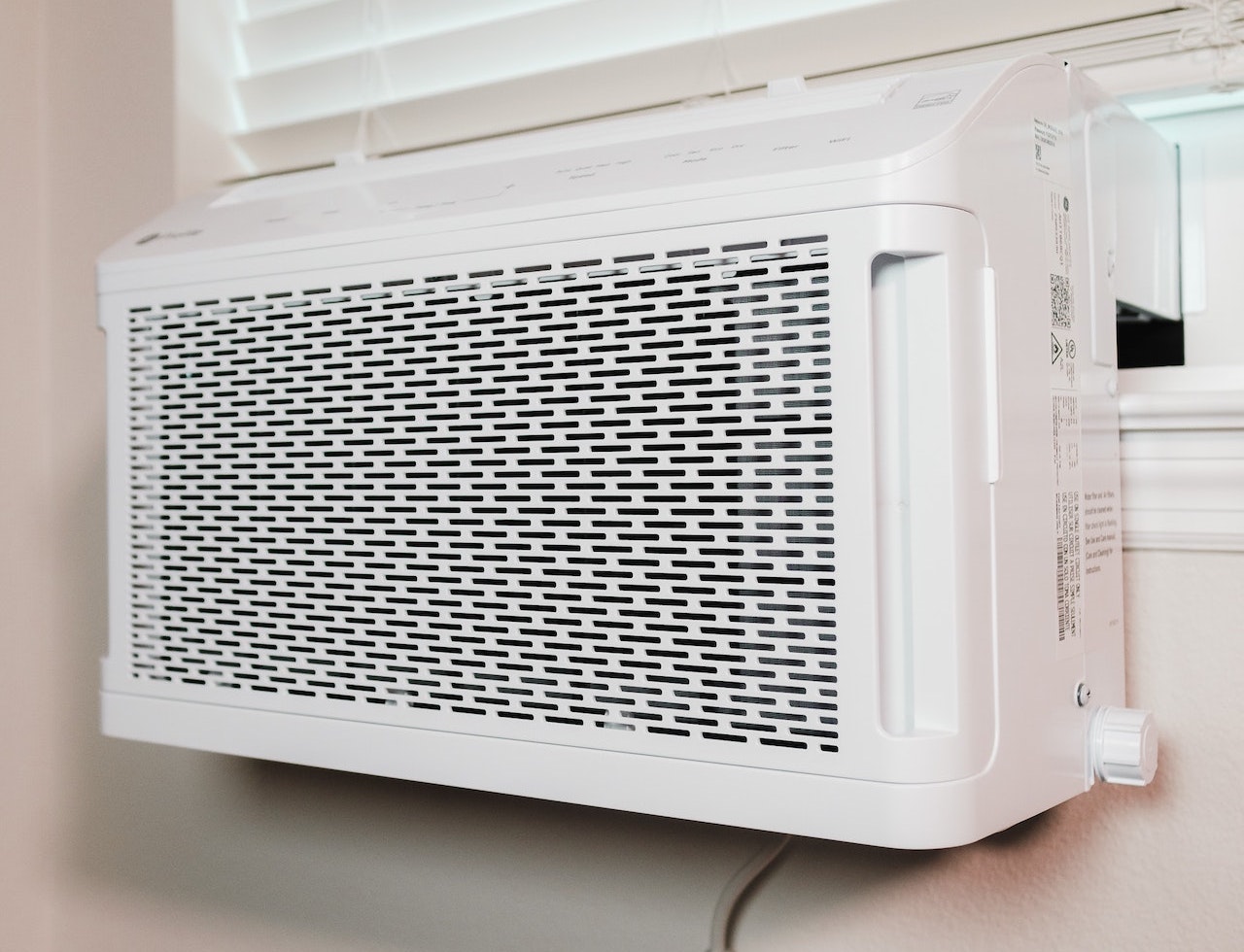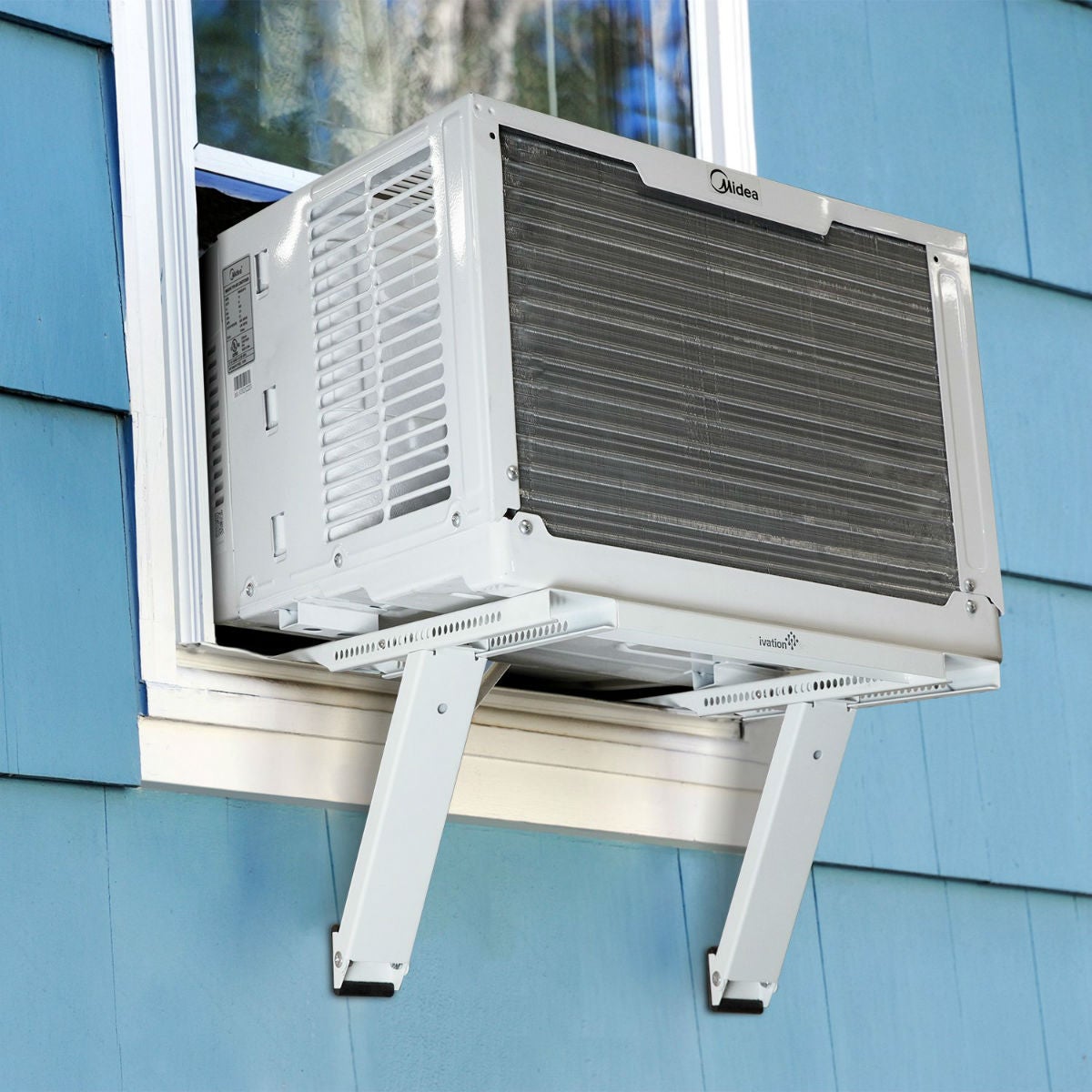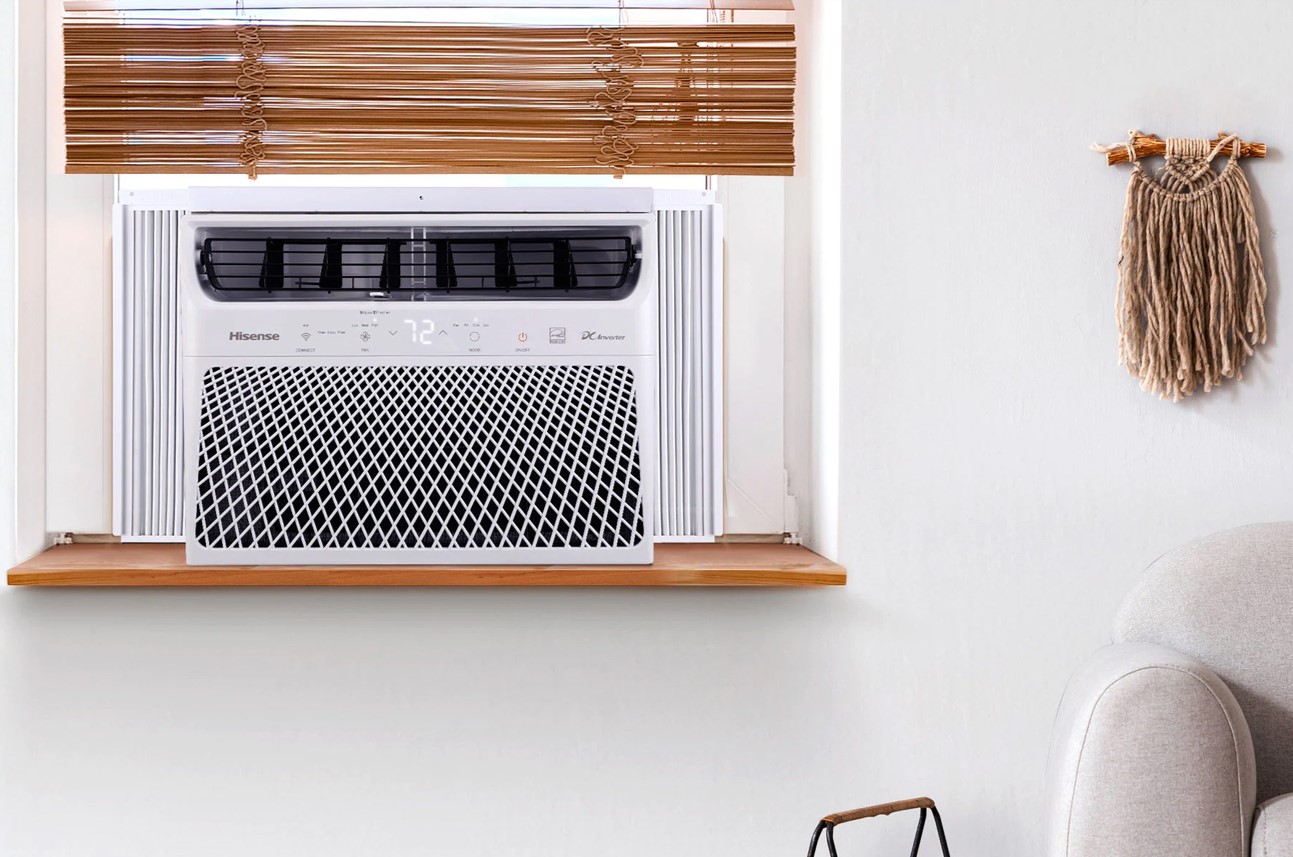Home>Home Maintenance>How Does A Window Air Conditioner Work
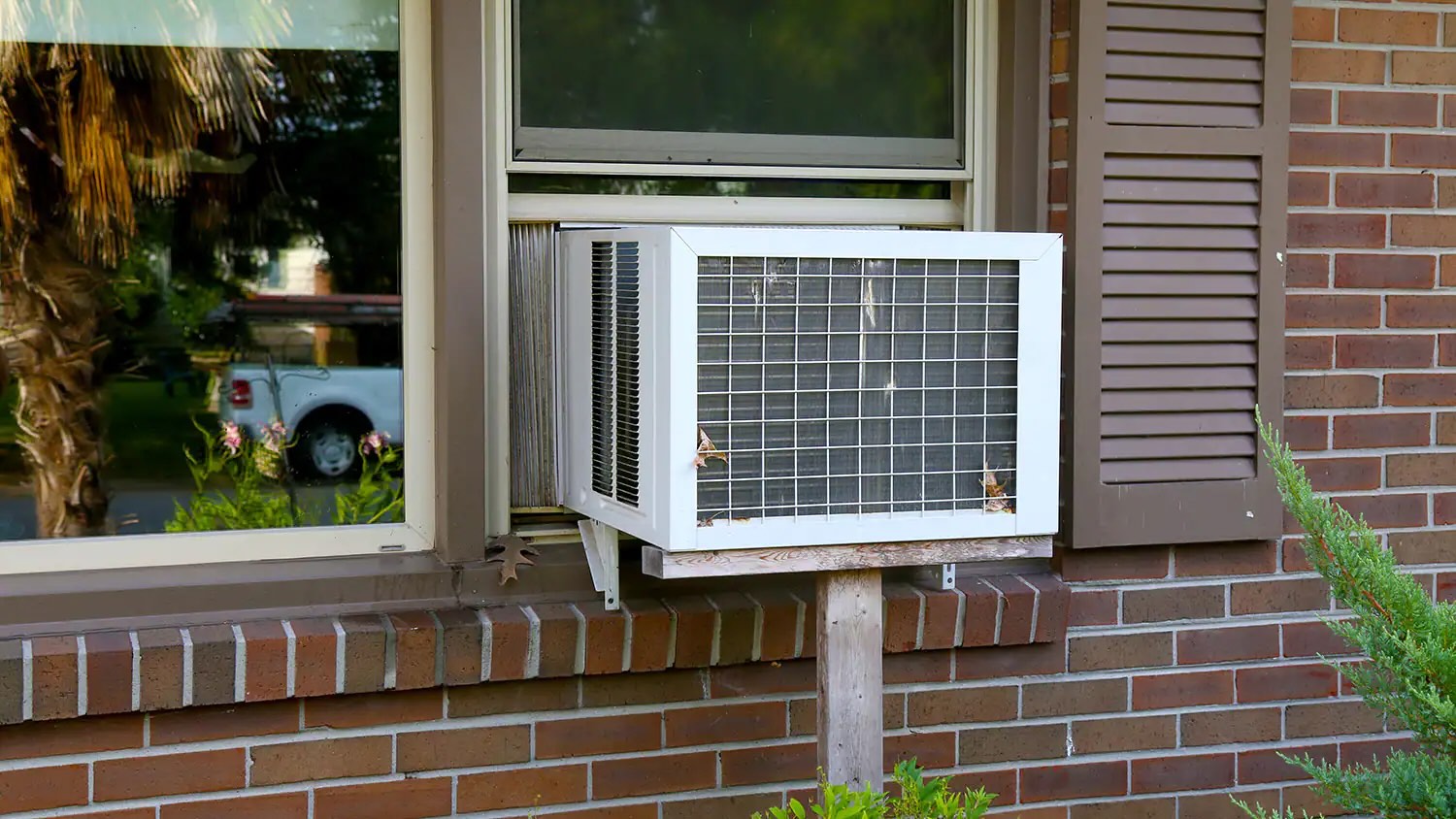

Home Maintenance
How Does A Window Air Conditioner Work
Modified: March 7, 2024
Learn how a window air conditioner works to keep your home cool during those hot summer months. Discover the essential home maintenance tips for optimal performance.
(Many of the links in this article redirect to a specific reviewed product. Your purchase of these products through affiliate links helps to generate commission for Storables.com, at no extra cost. Learn more)
Introduction
Window air conditioners are a popular choice for cooling specific rooms or small spaces. They offer a convenient and cost-effective solution to beat the heat during the sweltering summer months. Understanding how a window air conditioner works can help homeowners make informed decisions about their installation, usage, and maintenance.
In this article, we will delve into the components, mechanisms, and operation of window air conditioners, providing you with a comprehensive understanding of how they work.
So, let’s dive in and explore the inner workings of these powerful cooling devices.
Key Takeaways:
- Window air conditioners work by absorbing heat from indoor air, cooling it through a refrigeration cycle, and circulating the cooled air back into the room. Understanding their components and maintenance is crucial for efficient cooling.
- Proper maintenance, cleaning, and troubleshooting are essential for ensuring your window air conditioner operates effectively and provides a comfortable indoor environment. Energy efficiency and regular upkeep contribute to long-term performance.
Read more: How Does An Air Conditioner Work?
Components of a Window Air Conditioner
A window air conditioner consists of several key components working together to cool and circulate air in a room. These components include:
- Compressor: The compressor is the heart of the air conditioner. It pressurizes the refrigerant gas, raising its temperature in the process.
- Evaporator Coil: This coil is responsible for absorbing heat from the indoor air. As the refrigerant gas passes through the coil, it evaporates and extracts heat, cooling the air in the process.
- Condenser Coil: The condenser coil dissipates heat from the refrigerant, enabling it to return to a liquid state. It is located on the outside of the air conditioner.
- Expansion Valve: The expansion valve controls the flow of refrigerant into the evaporator coil. It reduces the pressure and temperature of the refrigerant, allowing it to absorb heat effectively.
- Air Filter: The air filter traps dust, dirt, and other particles to ensure clean airflow. Regular filter cleaning or replacement is essential for optimal air conditioner performance.
- Fan: The fan circulates air over the evaporator and condenser coils. It helps to distribute cool air into the room and expel hot air to the outside.
- Control Panel: The control panel houses the thermostat and other controls, allowing users to adjust temperature settings, fan speed, and modes.
These components work in tandem to create a refrigeration cycle and circulate cooled air within the room. Understanding how each part functions is crucial to troubleshooting and maintaining the optimal functioning of your window air conditioner.
Refrigeration Cycle
The refrigeration cycle is the process by which a window air conditioner removes heat from indoor air and transfers it outside, resulting in cooling. This cycle involves four main stages:
- Compression: The compressor in the air conditioner pressurizes the refrigerant gas, increasing its temperature.
- Condensation: The hot, pressurized refrigerant gas then flows to the condenser coil located on the outside of the unit. As the air from outdoors blows over the condenser coil, the refrigerant releases its heat and condenses into a high-pressure liquid.
- Expansion: The high-pressure liquid refrigerant passes through the expansion valve, where it rapidly expands. This expansion causes the refrigerant to cool down significantly.
- Evaporation: The cool, low-pressure refrigerant then enters the evaporator coil located inside the air conditioner. As warm indoor air from the room flows over the evaporator coil, the refrigerant absorbs the heat from the air, cooling it down. The refrigerant evaporates and returns to a low-pressure gas form.
This continuous cycle repeats, with the refrigerant absorbing heat from the indoor air and releasing it outside, effectively cooling the room. The fan helps to circulate the air over the evaporator coil, ensuring efficient cooling.
It’s important to note that window air conditioners require a proper seal around the unit to maintain the cycle and prevent the entry of warm air from outside. Any gaps or leaks can lead to reduced efficiency and increased energy consumption.
Air Circulation
Air circulation is a crucial aspect of how a window air conditioner operates. It ensures the efficient distribution of cooled air in the room, creating a comfortable environment. The air circulation process involves the following steps:
- Air Intake: The window air conditioner draws warm air from the room through the front grille or intake vent. This warm air contains heat, moisture, and other impurities.
- Air Filtration: As the warm air enters the unit, it passes through the air filter. The air filter traps dust, allergens, and other particles, ensuring that the circulated air is cleaner and healthier.
- Evaporator Coil: Once the warm air passes through the air filter, it reaches the evaporator coil. This coil contains the cold refrigerant, which absorbs heat from the air, effectively cooling it down. As the air flows over the evaporator coil, it gets chilled.
- Air Distribution: The fan inside the window air conditioner helps to circulate the chilled air back into the room. It blows the cooled air out through the front grille or louvers, creating a refreshing breeze.
- Air Exhaust: Simultaneously, the hot air generated by the refrigeration cycle is expelled outside through the exhaust vent, located at the back or side of the unit. This hot air contains the heat that was extracted from the indoor air, effectively removing it from the room.
The continuous circulation of air ensures that the cooled air is evenly distributed throughout the room, providing consistent temperature and comfort. Adequate air circulation is essential for efficient cooling and preventing hot spots or stagnant air.
To optimize air circulation, it is recommended to keep doors and windows closed while the window air conditioner is running. This helps to maintain the cool air inside the room and prevent the entry of warm air from outside.
Thermostat and Control
The thermostat and control panel of a window air conditioner play a crucial role in maintaining the desired temperature and providing control over the unit’s operation. Here’s a closer look at these components:
Thermostat: The thermostat is a temperature-sensitive device that measures the ambient temperature in the room. It allows you to set and maintain the desired temperature. When the room temperature reaches the set temperature, the thermostat signals the air conditioner to cycle off. As the temperature rises above the set level, the thermostat triggers the air conditioner to turn back on and resume cooling.
Control Panel: The control panel houses various buttons, switches, and settings that enable you to adjust the operation of the window air conditioner. Typical control panel features include:
- Power Button: This button turns the unit on and off.
- Temperature Control: This allows you to set the desired temperature using a dial or buttons. Some models even offer digital displays for precise temperature control.
- Fan Speed: You can choose from multiple fan speed settings to adjust the airflow intensity, ranging from low to high.
- Mode Selection: Depending on the model, you may have options like cool mode, fan mode, energy-saving mode, or sleep mode. These modes offer different levels of cooling and energy efficiency.
- Timer: Many modern window air conditioners come with programmable timers, allowing you to set specific on and off times for the unit. This feature can help save energy and provide convenient cooling.
The thermostat and control panel give you the flexibility to customize the cooling experience according to your preferences. By adjusting the temperature, fan speed, and mode, you can create an ideal indoor environment while optimizing energy usage.
It’s worth noting that proper use of the thermostat and control settings can significantly impact energy efficiency. Setting the temperature slightly higher or utilizing the energy-saving mode can help conserve energy and reduce utility costs.
Tip: A window air conditioner works by drawing in warm air from the room, cooling it with refrigerant, and then releasing the cooled air back into the room while expelling the warm air outside. Regular maintenance, such as cleaning the filter and coils, can help improve its efficiency.
Read more: What Is A Window Air Conditioner
Energy Efficiency
Energy efficiency is an important consideration when it comes to choosing and operating a window air conditioner. Opting for an energy-efficient unit can help reduce your carbon footprint and save on electricity bills. Here are some factors that contribute to the energy efficiency of a window air conditioner:
- Energy Star Rating: Look for window air conditioners with an Energy Star rating. Units with this label meet strict energy efficiency guidelines set by the Environmental Protection Agency (EPA). Energy Star-rated air conditioners have advanced features that help reduce energy consumption without compromising performance.
- Size and Cooling Capacity: Choosing an appropriately sized unit for your room is crucial. A unit that is too small will have to work harder to cool the space, consuming more energy. Conversely, an oversized unit may cycle on and off frequently, resulting in inefficient cooling. Ensure that you select a window air conditioner with the right cooling capacity for your room size.
- Energy-Saving Modes: Many modern window air conditioners offer energy-saving modes, which automatically adjust the settings to conserve energy. These modes may include temperature setbacks, fan speed adjustments, or even the ability to turn off the unit when the desired temperature is reached.
- Programmable Timers: Utilizing the programmable timer function on your window air conditioner can help save energy. By setting specific on and off times, you can ensure that the unit operates when needed and avoids unnecessary running when the room is unoccupied.
- Proper Insulation: Ensuring that your window air conditioner is properly installed and insulated can improve energy efficiency. Properly sealing any gaps or leaks around the unit will prevent warm air from entering the room and reduce the workload on the air conditioner.
- Regular Maintenance: Keeping your window air conditioner well-maintained is crucial for optimal energy efficiency. Regularly cleaning or replacing the air filter, cleaning the coils, and removing any debris from the unit will help it operate more efficiently and maximizes its cooling performance.
By being mindful of these energy-saving practices, you can enjoy the cooling benefits of a window air conditioner while minimizing your environmental impact and saving on energy costs.
Maintenance and Cleaning
Maintaining and cleaning your window air conditioner is essential for its proper functioning and longevity. Regular maintenance not only ensures optimal cooling performance but also helps improve energy efficiency. Here are some maintenance tasks to keep in mind:
- Cleaning or Replacing the Air Filter: The air filter in your window air conditioner traps dust, dirt, and other particles from the air. Over time, the filter can become clogged, obstructing airflow and reducing efficiency. Check the filter regularly and clean or replace it as needed. A clean filter promotes better air quality and allows the air conditioner to operate more effectively.
- Cleaning the Coils: Both the evaporator and condenser coils can accumulate dirt and debris. Clean them periodically to ensure proper heat exchange. Using a soft brush or vacuum cleaner, gently remove any dirt or dust from the coils. You may also use a coil cleaner solution for more thorough cleaning.
- Clearing Blockages: Regularly inspect the vents and passages of your window air conditioner to ensure they are free from obstructions. Over time, leaves, insects, or debris can accumulate and block the airflow. Clear any blockages using a brush or compressed air.
- Checking for Leaks: Inspect the window seal and surrounding areas for any air leaks. These leaks can affect the unit’s efficiency by allowing warm air to enter the room. Ensure that the window air conditioner is properly sealed and make any necessary adjustments or repairs.
- Leveling the Unit: Make sure your window air conditioner is properly leveled. If it is tilted or uneven, the condensation drainage may be affected. Check the unit’s level periodically and adjust as needed for efficient drainage.
- Professional Check-ups: It’s a good idea to schedule professional check-ups for your window air conditioner. An HVAC technician can inspect and service the unit, ensuring all components are functioning optimally and addressing any potential issues before they become major problems.
Regular maintenance and cleaning of your window air conditioner will not only improve its performance but also extend its lifespan. It is important to follow the manufacturer’s guidelines and recommendations specific to your unit for the best maintenance practices.
Common Issues and Troubleshooting
While window air conditioners are generally reliable, they may encounter some common issues from time to time. Here are a few common problems you may face along with some troubleshooting tips:
- Inadequate Cooling: If your window air conditioner is not cooling the room effectively, check if the air filter is dirty or clogged. Clean or replace the filter if needed. Additionally, ensure that the unit is the appropriate size for your room and that there are no obstructions blocking the airflow.
- Strange Noises: Unusual noises coming from the air conditioner could indicate loose components, debris in the fan blades or condenser, or a malfunctioning motor. Turn off the unit and inspect for any visible issues. If the problem persists, it may be best to seek professional assistance.
- Leaking Water: Water leakage can occur due to a clogged condensate drain or improper leveling of the unit. Check the condensate drain line for any blockages and ensure that it is properly positioned to allow proper drainage. If the issue persists, consider contacting a professional for further assistance.
- Unit Not Turning On: If your window air conditioner refuses to turn on, check if it is receiving power. Make sure it is plugged in securely and that the circuit breaker is not tripped. If the power supply is working fine, there may be an issue with the control panel or thermostat, and professional attention may be required.
- Unresponsive Controls: If the controls on your window air conditioner are unresponsive, ensure that the control panel is not locked or in sleep mode. Reset the unit by unplugging it for a few minutes and then plugging it back in. If the issue persists, consider consulting the user manual or contacting the manufacturer for guidance.
If you encounter any problems with your window air conditioner that you are unable to resolve on your own, it is recommended to seek professional assistance. HVAC technicians have the expertise and specialized tools to diagnose and fix complex issues.
Remember, regular maintenance and prompt troubleshooting can help address many common issues and ensure that your window air conditioner continues to provide efficient cooling for years to come.
Conclusion
Window air conditioners are essential for keeping our homes cool and comfortable during hot summer days. Understanding how these units work and how to maintain them properly can greatly enhance their performance and longevity.
In this article, we explored the components of a window air conditioner, including the compressor, evaporator coil, condenser coil, expansion valve, air filter, fan, and control panel. We also discussed the refrigeration cycle, which is responsible for the cooling process, as well as the importance of air circulation for efficient cooling.
Furthermore, we highlighted the significance of the thermostat and control panel in managing temperature settings and controlling the operation of the unit, as well as the importance of energy efficiency and the various factors that contribute to it.
Maintaining and cleaning your window air conditioner regularly is crucial for optimal performance. Performing tasks such as cleaning or replacing the air filter, cleaning the coils, clearing blockages, and checking for leaks can improve the efficiency and longevity of your unit.
Lastly, we addressed common issues that may arise with window air conditioners, such as inadequate cooling, strange noises, leaking water, unit not turning on, and unresponsive controls. We provided troubleshooting tips for these problems but also emphasized the importance of seeking professional assistance when needed.
By understanding how window air conditioners work and implementing proper maintenance practices, you can ensure that your unit operates efficiently, saves energy, and provides the comfort you need during the hot summer months.
Remember, a well-maintained and properly functioning window air conditioner not only brings relief from the heat but also enhances the overall indoor air quality, improving your living environment and promoting a comfortable and pleasant atmosphere in your home.
Frequently Asked Questions about How Does A Window Air Conditioner Work
Was this page helpful?
At Storables.com, we guarantee accurate and reliable information. Our content, validated by Expert Board Contributors, is crafted following stringent Editorial Policies. We're committed to providing you with well-researched, expert-backed insights for all your informational needs.
